If you are not gaining weight, perhaps it is your diet that needs more attention. If you are using HST and you are not gaining weight, it is definitely your diet. By "diet" I mean everything that you eat (or don't eat) in a day. This includes protein, fat, carbs, as well as protein supplements, fat supplements, and carbohydrate supplements. Let's break it down into bite size chunks and put together a Hypertrophy-Specific Nutrition plan.
When planning your meal(s), start with the nutrients most important to the body. There are 3 categories of essential nutrients namely, protein (essential amino acids), essential fats, and vitamins and minerals. If your goal is to build muscle tissue always start with calories, then protein, then essential fats, and then finish with vitamins, minerals and carbs.
Calories
At the simplest level, an excess of calories is required for the body to increase its fat-free/water-free mass. By excess we mean calories in excess of the body's daily caloric needs. Now, there are some of you who might have heard of people experiencing a simultaneous increase in muscle mass and loss of body fat. This DOES frequently happen while using HST, but it should not be your only measure of success. You will experience much more success by focusing your efforts either on gaining muscle, or losing body fat, rather than both at the same time. Trust me on this.
To determine your caloric needs you will need to use a calculation or formula. These formulas are a way of estimating your caloric needs, and although not perfectly exact, they will give you a very good idea of where to start. Don't be turned off by the numbers either. You don't have to be a math wiz to do these simple calculations. One abbreviation you will often see when taking about caloric needs is "BMR". This stands for Basal Metabolic Rate and is defined as the numbers of calories your body burns at rest during a 24-hour period. Ok then, with that out of the way, lets look at the formulas.
Optional Formula 1
The first formula is the simplest and least detailed. To find you Basal Metabolic Rate simply multiply your weight in pounds by 11-12. This will give you a range that your BMR should fall within. So, if you weight 220 pounds, it would look like this:
- 220 x 11 or 12 = 2420-2640 calories (BMR)
To gain weight, you have to eat more than your BMR though. In this case you should use 16 as the multiplying factor. So in order to gain weight use the following formula:
- 220 x 16 = 3520 calories (calories needed to gain weight)
Optional Formula 2
Note: An auto-calculator is down below for formula #2.
This formula requires more steps, but might be more accurate. You'll start by finding your BMR, then you will use an "activity factor" to figure out how many calories you need to gain weight. So first, if needed, convert your weight in pounds into kilograms. This is done by dividing your weight in pounds by 2.2. So, using our same example of a 220 person:
- 220/2.2 = 100 kilograms
Now in order to find your BMR you need to multiply your weight in kilos by 24. So:
- 100 kilos x 24 hours = 2400 calories (BMR)
Note
Women will need to then multiply their BMR by 0.9. This accounts for the increased level of body fat for the average women. Any women with body fat percentages at or below 10% need not do this.
Because our BMR does not take into account our daily activity level, we must multiply our BMR by the activity factor. Here are the activity factors:
- Very active = 1.4 - 1.5
- Active = 1.3 - 1.4
- Light active = 1.1 - 1.2
- Sedentary = 1
So, here is a summary of the steps in formula #2
Men
- Convert weight in pounds to kilograms
- Multiply Weight in kilograms x 24 hours = BMR
- BMR x Activity Factor = Daily Caloric Needs
Women
- Convert weight in pounds to kilograms
- Weight in kilograms x 24 hours = BMR
- BMR x 0.9 = adjusted BMR for women
- Adjusted BMR x Activity Factor = Daily Caloric Needs
For our example 220-pound person formula #2 would work like this:
- 220lbs/2.2 = 100 kilograms
- 100kg x 24 hours = 2400 calories (BMR)
- 2400 calories x 1.2 = 2880 calories to maintain current weight
- Now to gain weight, I will need to add between 500-600 calories per day. This gives a grand total of 3380-3480 calories per day to gain weight, according to formula #2.
As you can see, the two formulas give you pretty much the same number of calories needed to gain weight. In my personal opinion it doesn't matter which formula you use, just as long as you are willing to adjust it as necessary. If after 4 weeks you begin to gain too much fat, you better reduce the calories. On the other hand, if no weight is gained, you'll need to increase the calories. The formulas simply give us a good starting point.
Before moving on to breaking calories down into protein carbs and fat, let me remind you of the impact of previous caloric restriction on your body's metabolism. If you have been "semi-dieting" for some time prior to deciding to gain weight, your body will be accustomed to fewer calories than your "normal" BMR. This will throw off your calculations a bit. The numbers the formulas give you will over estimate your caloric needs if you have been dieting prior to your diet change.
If you have been dieting, first plan to eat the calculated BMR for at least 2 weeks prior to increasing your calories to "weight gain" levels. You may find you begin to gain weight even on your calculated BMR, or at least experience an increase in resting body temp. Let your body readjust your BMR to your calculated BMR before upping the calories. After 4 weeks, then go ahead and work your way up to 500-600 calories above your calculated maintenance calories. Once again, trust me on this.
Macronutrients
Because calories are made up of protein, fat, and carbohydrates, we will now take a look at where your calories should come from to gain muscle.
Protein
(Protein provides 4 calories per gram)
Plan on eating 0.8-1 gram protein per pound bodyweight. Most people usually shoot for 1 gram/pound body weight because it's an easy rule to remember. First choose a lean protein source such as fish or boneless skinless chicken breast. These are only examples however, any lean meat or protein supplement will do. Beef is just fine as well, just make sure you trim all visible fat, and only use the leanest ground beef.
Allocate a portion suitable for your particular nutrition plan and caloric needs. A good place to start per meal would be 4 ounces, or a portion about the size of the palm of your hand. Meat will have about 4-5 grams protein per ounce before cooking. If you weigh it after cooking it will have about 6-7 grams protein per ounce. For our ongoing 220-pound example person, this would mean 175-220 grams protein per day. This comes to 880 calories if we give him 1-gram protein per pound of bodyweight. So subtracting this from our goal of 3500 calories we have 2620 more calories we'll need to get from fat and carbs.
Fat
(Fat provides 9 calories per gram)
Next decide where your essential fats will come from and how much you'll need. Keep in mind that not all fats contribute to body fatness to the same extent. In other words, good fats can actually prevent fat gain, whereas saturated and hydrogenated fats encourage fat storage even on fewer calories.
Essential fats lacking in most diets are omega-3 fatty acids. These can be found in fish, or various plant sources such as walnuts or flax oil. If you are looking just to get pure omega-3s (EPA & DHA), plan to get 3-4 grams per day. If you don't eat much fish, this will require a fish oil supplement. If you use flax oil, take about 1 tablespoon per 100 pounds bodyweight. If you chose to use flax oil...
If you chose to use flax oil, keep in mind that chronic caffeine consumption will interfere with the body's ability to convert linolenic acid into EPA and DHA. Using fish oil already contains EPA and DHA so you needed worry about interference with caffeine. The meat that we will need to eat will provide anywhere from 7-14 grams fat per meal. Lets take an average of 11 grams per meal. Lets say we eat meat 5 times per day. That gives us 55 grams of fat per day from meat. Like I say, this is just a really good guess based on averages. It may be slightly higher or slightly lower day by day, but on average, you should come in at about 55 grams a fat per day just from eating lean meats.
Lets add a little bit of Flax oil as well as Fish oil to our diet. At 220 pounds our guy need 2 tablespoons of Flax and 4 grams of fish oil supps. That's an additional 32 grams of fat. That gives us a grand total of 87 grams of fat per day. At 9 calories per gram that gives us 783 calories per day from fat. Subtract that from the 2620 calories we had left after adding protein and we have 1837 calories left to fill with carbs.
Vitamin/Carbs
(Carbohydrates provide 4 calories per gram)
Finally, you need to get in some essential vitamins and minerals. Fruits, grains and vegetables will provide these. It is recommended that we get 3-5 servings of vegetables and 2-4 servings of fruit per day. A serving of vegetables equals 1-cup raw leafy vegetables. One serving of fruit equals one piece of fruit such as a medium sized apple, orange, or banana.
[NOTE] There has been a lot of hysteria about fruit for about the last 5 years or so. It is true that different carbohydrates are metabolized differently in the body, depending on their ring structure. The panic about fructose, which was then misapplied to fruit, arose out of research using mice and high fructose corn syrup. The concern about fruit, although based on some truths about the metabolism of fructose, is unfounded. High Fructose corn syrup is an extremely dense source of fructose.
When consumed in the diet, it overloads the liver with glycogen, which then leads to insulin resistance and lipogenesis in that organ. Fruit, on the other hand, is neither calorie nor fructose dense. Fresh raw fruit is mostly water and fiber. One piece of fresh fruit has about 17 grams of carbs per serving with relatively insignificant amounts of fructose compared to high fructose corn syrup. So, don't worry about eating fresh raw fruit. But steer clear of anything with high fructose corn syrup in it.
Carbohydrates also come in the form of grains. Whole grains should be your first choice, not only for food value, but also for the slower absorption of most whole grain foods. Keep in mind however the many highly processed foods still claim to be "whole grain". These foods seldom behave as true complex carbohydrates, so buyers beware. Your best sources of whole grain foods are oatmeal, whole grain rice, and corn. Whole grain breads can also be good but require that you read the label before lumping it in with a true whole grain product.
Another good carb source are roots such as potatoes and yams. Nothing fancy-doesn't matter if you mash them or not-just skip the butter and sour cré¥. Mashing potatoes tends to make people eat more per serving so be aware of that. So grains, roots, fruits and vegetables will provide our carbohydrates. We wont go into the world of Glycemic Index (GI) here. Just keep in mind that mixing carbohydrates with other macronutrients slows their absorption relative the percentage of that carbohydrate source in that meal. So a mixed meal with 50% carbs from potatoes will give the potatoes a glycemic index 50% lower than eating potatoes alone on an empty stomach.
So we need to hit 1837 calories from our carbohydrates. That comes to just over 450 grams. Our example lifter will need to try to get at least 350 from complex carbs. The rest should be consumed immediately before and after training.
HSN On Paper
So what does 3,500 calories look like? Well, unless your eating junk food, it's a lot more than most people think. In fact, most people fail in their attempts to eat enough clean food as often as they fail on weight loss diets. Below are some sample diets. THESE ARE ONLY SUGGESTIONS. Please don't email me if your 2 cups of rice has 92 grams of carbs instead of 90. These are only examples and none of the food portions were tested in a bomb-calorimeter or anything.
Start Here: Are you 160 lbs?, 190 lbs?, 200 lbs?
2,500 CALORIES
 Eggs
Eggs
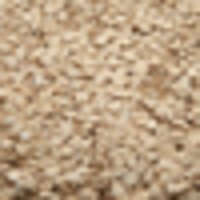 Oatmeal
Oatmeal
 Banana
Banana
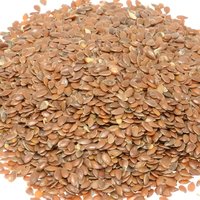 Flaxseeds
Flaxseeds
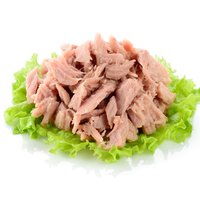 Tuna
Tuna
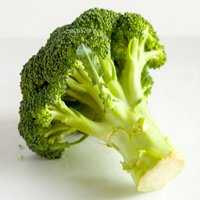 Broccoli
Broccoli
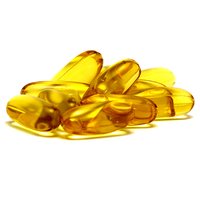 Fish Oil
Fish Oil
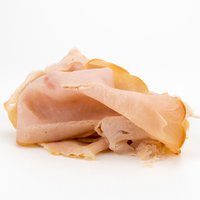 Turkey
Turkey
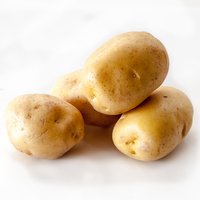 Potato
Potato
 Eggs
Eggs
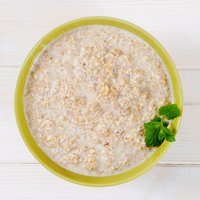 Cream Of Wheat
Cream Of Wheat
 Fish Oil
Fish Oil
3,000 CALORIES
 Eggs
Eggs
 Cream Of Wheat
Cream Of Wheat
 Banana
Banana
 Flaxseeds
Flaxseeds
 Tuna
Tuna
 Fish Oil
Fish Oil
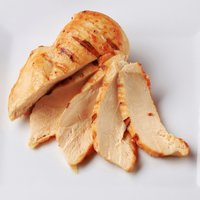 Chicken
Chicken
 Potato
Potato
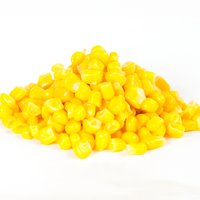 Corn
Corn
 Chicken
Chicken
 Potato
Potato
 Halibut
Halibut
 Potato
Potato
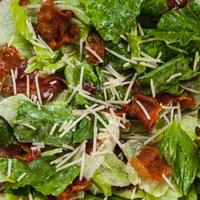 Salad
Salad
 Fish Oil
Fish Oil
3,500 CALORIES
 Eggs
Eggs
 Cream Of Wheat
Cream Of Wheat
 Banana
Banana
 Flaxseeds
Flaxseeds
 Tuna
Tuna
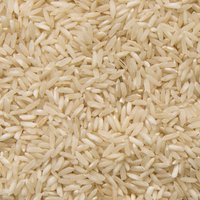 White Rice
White Rice
 Fish Oil
Fish Oil
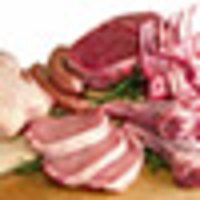 Lean Meat
Lean Meat
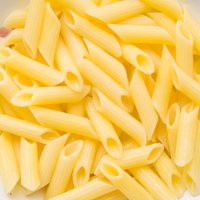 Pasta
Pasta
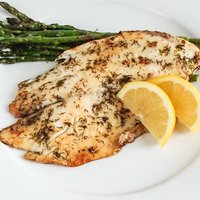 Fish
Fish
 Potato
Potato
 Orange
Orange
 Chicken
Chicken
 Corn
Corn
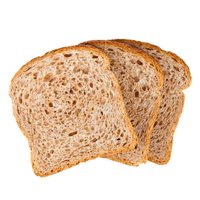 Whole Wheat Bread
Whole Wheat Bread
 Salad
Salad
 Fish Oil
Fish Oil
- Prime+ and Drive+ are MRP versions of Primer and Driver and are currently in development.
In Summary
To increase whole body mass, you must ingest more than just maintanance calories. You can figure out the calories you need by one of two simple calculations.
Option 1
- 16 x bodyweight = Calories needed to gain whole body weight.
Option 2
- Weight in kilograms x 24 = BMR
- BMR x Activity Factor = Calories need to maintain current weight
- Calories needed to maintain current weight + 500 calories = Calories needed to gain whole body weight.
Next, put your meals together starting with protein. Try to get 1-gram protein per pound of bodyweight (2.2 grams per kilogram). Lean meats should make up the bulk of your protein intake. Make sure to get in your Primer before, and Driver after your workout. Don't miss these if you are serious about gaining muscle.
Then plan to get enough essential fatty acids for your bodyweight. This translates into 1 tablespoon of Flax oil per 100 pounds bodyweight, or 2 grams fish oil supplement per 100 pounds bodyweight. CLA can be added at 6 grams per day for added effect. The rest of your calories should come from complex carbs. It is important to avoid high fructose corn syrup. If you are using carbs before and after training, try to use dextrose (glucose) or maltodextrin (a disaccharide of glucose). These will ensure your muscles also get a dose of carbs, and not just your liver.
If you have been dieting, it will take fewer calories to elicit the same anabolic response. So, ease into higher calories carefully. So there you have it. Eating to grow requires just as much attention to detail as dieting or training. This article is just a brief summary of nutrition. It is basically a "how to" without the "why".
Nevertheless, follow the guidelines in this article and you will grow! I personally guarantee that HST and HSN will produce faster gains than any other methods known today. But don't take my word for it, try it and you'll see for yourself, just as thousands of others have already discovered.

